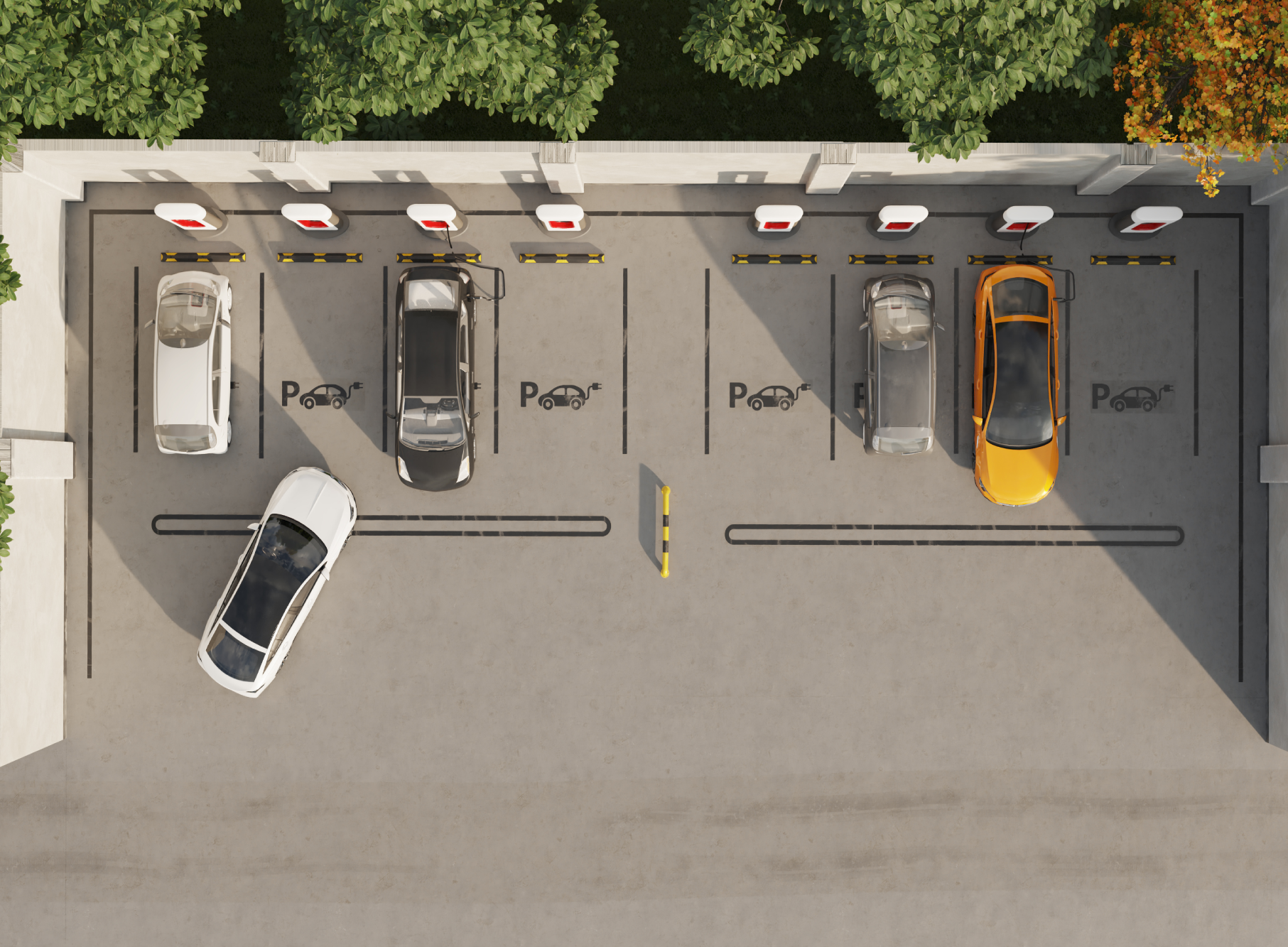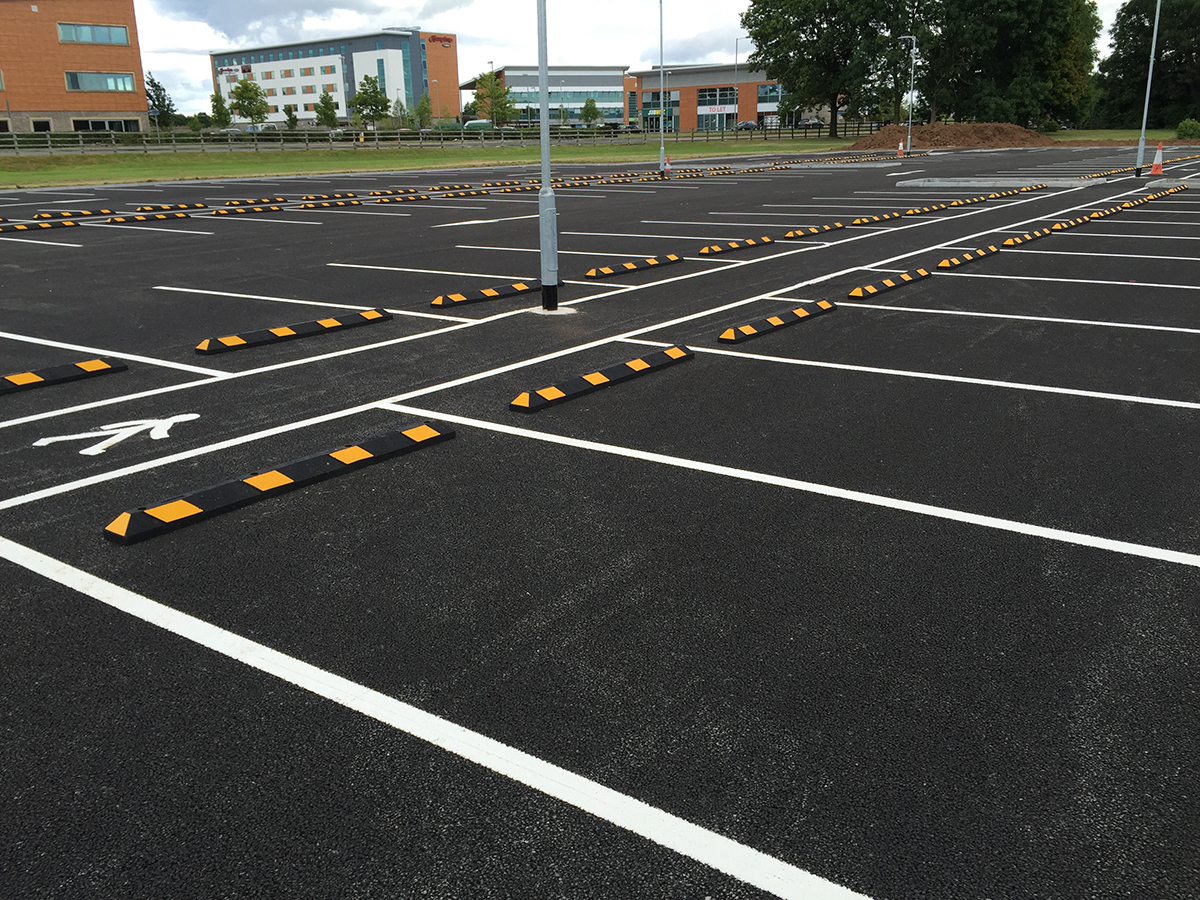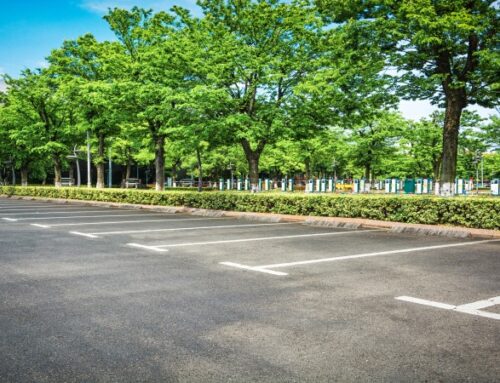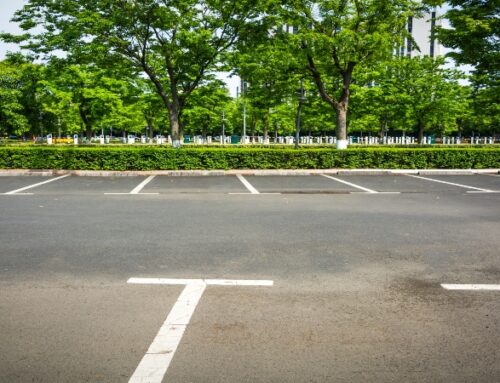In the bustling streets of Melbourne, where urban spaces are at a premium, the significance of a well-constructed car park extends far beyond mere convenience—it’s an integral component of the city’s infrastructure. With a thriving cultural scene and a constant flux of visitors and residents, the necessity for efficient and strategically designed parking facilities becomes paramount. A well-executed car park not only ensures smooth vehicular movement but also contributes significantly to traffic management, enhances urban aesthetics, and plays a pivotal role in elevating the overall accessibility and functionality of Melbourne’s diverse neighborhoods. Understanding the importance of a thoughtfully constructed car park is not just about providing parking spaces; it’s about fostering a seamless urban experience that reflects the vibrancy and efficiency of this cosmopolitan hub.
Selecting the right car park construction service in Melbourne holds immense significance, transcending the mere creation of a parking facility. Melbourne’s urban landscape demands precision, innovation, and adherence to high standards in construction. Choosing the appropriate service provider ensures not just the successful completion of a car park, but a multitude of other critical aspects:
- Quality and Durability: The right construction service guarantees a car park built to last. Quality materials, skilled workmanship, and adherence to industry standards ensure durability, minimising maintenance costs and ensuring the safety of users.
- Compliance and Regulations: Melbourne has stringent building codes and regulations. Selecting a reputable service ensures compliance with local laws, avoiding potential legal issues and delays in the construction process.
- Customisation and Efficiency: Every car park has unique requirements. The right service provider offers tailored solutions that optimise space, enhance traffic flow, and accommodate specific needs, ensuring an efficient parking layout.
- Timely Delivery: Construction delays can be costly and inconvenient. A reliable service provider delivers on time, meeting deadlines without compromising quality, thus ensuring minimal disruption to the surrounding area.
- Expertise and Innovation: Melbourne’s dynamic environment demands innovation. Choosing a construction service with expertise in modern technologies and innovative construction methods ensures a car park equipped to meet evolving needs, whether through smart parking solutions or eco-friendly designs.
- Long-Term Support: Beyond construction, a reputable service often provides ongoing support, maintenance, and even future expansion services, fostering a long-term partnership and ensuring the sustained functionality of the car park.
In essence, the right choice in construction service transcends the physical structure; it defines the reliability, efficiency, and adaptability of the car park, shaping its role as a crucial asset within Melbourne’s urban framework.
Understanding Your Needs
Identifying the purpose and requirements of a car park in Melbourne is pivotal to ensuring its effectiveness and suitability within the city’s dynamic landscape. Here’s a breakdown of the key considerations:
Purpose:
- Public Access or Private Use:
- Public Access: Car parks catering to public access are often located in areas with high foot traffic such as shopping precincts, tourist attractions, or central business districts. These spaces require high capacity, efficient traffic flow, and possibly payment systems or validation methods.
- Private Use: Car parks associated with residential buildings, corporate offices, or private institutions have different needs. They may prioritise security, designated spaces, and convenient access for residents, employees, or clients.
- Commercial or Residential Focus:
- Commercial Spaces: Car parks linked to commercial areas, shopping malls, or entertainment venues necessitate large capacities, clear signage, and perhaps valet services to handle peak hours and various vehicle sizes.
- Residential Areas: Residential car parks emphasise safety, accessibility, and possibly designated spots for residents. Features like well-lit areas and security measures are essential for peace of mind.
- Mixed-Use Functionality:
- Some car parks serve multiple purposes, integrated into mixed-use developments encompassing retail, residential, or office spaces. Understanding the diverse needs of these segments is vital in planning the parking layout.
Requirements:
- Vehicle Traffic Analysis:
- Peak and Off-Peak Traffic: Analyse the expected number of vehicles during peak and off-peak hours to estimate the car park’s capacity requirements accurately.
- Types of Vehicles: Consider the diversity of vehicles, from compact cars to larger SUVs or even buses, to accommodate various sizes and optimise space.
- Available Space and Location:
- Space Constraints: Assess the available land or space allocated for the car park. This determines the maximum footprint and layout possibilities.
- Location Accessibility: Consider the accessibility of the location, proximity to public transport, and its relevance within the area to estimate demand.
- Capacity and Size: Determine the estimated number of vehicles that will use the car park daily. This analysis guides decisions on size, layout, and the number of parking spaces required to accommodate peak loads without causing congestion.
- Accessibility and Traffic Flow:
- Entry and Exit Points: Strategically plan entry and exit points to prevent bottlenecks and ensure smooth traffic flow, minimising congestion during peak hours.
- Navigation and Signage: Clear signage, designated lanes, and efficient pathways within the car park ensure easy navigation for drivers, reducing confusion and congestion.
- Safety and Security Measures:
- Lighting and Surveillance: Ensure adequate lighting and surveillance systems throughout the car park to enhance safety and deter unauthorized activities, especially during low-light hours.
- Access Controls: Implement access controls such as ticketing systems or barriers to regulate entry and ensure security.
- Aesthetics and Urban Integration:
- Architectural Design: Harmonise the car park’s design with Melbourne’s urban aesthetics. Incorporate design elements that complement surrounding structures, contributing positively to the cityscape.
- Green Spaces and Integration: Integrate green spaces or artistic elements to enhance the visual appeal and contribute to Melbourne’s emphasis on urban beautification.
- Environmental Considerations: Incorporate sustainable elements like rainwater harvesting, solar panels, or electric vehicle charging stations to align with Melbourne’s eco-conscious initiatives.
- Compliance and Accessibility:
- Disability Access: Ensure compliance with disability access regulations, providing accessible parking spaces and amenities for people with disabilities.
- Regulatory Compliance: Adhere to local building codes, zoning laws, and environmental regulations to avoid legal issues and ensure sustainability.
9. Future Expansion and Adaptability: Design the car park with scalability in mind to accommodate potential growth, technological advancements, or future expansion needs.
By meticulously assessing these purposes and requirements, stakeholders can craft a comprehensive plan that not only addresses immediate needs but also aligns with Melbourne’s urban vision, creating a car park that seamlessly integrates into the city’s fabric while meeting the diverse needs of its inhabitants and visitors.
Researching Potential Car Parking Construction Service Provider

Researching potential car parking construction service providers in Melbourne involves several key steps to ensure you find a reliable and efficient company for your project. Here’s a detailed breakdown of the process:
- Defining Your Requirements: Begin by outlining your specific needs. Determine the size, scope, and features required for your car parking construction project. Consider aspects like the number of spaces, location, budget, time frame, and any special requirements such as technology integration or eco-friendly designs.
- Online Research: Start by conducting thorough online research. Utilise search engines, industry-specific directories, and review platforms to identify a list of potential service providers in Melbourne. Websites, social media profiles, and online portfolios can give you an idea of their past projects, capabilities, and customer reviews.
- Referrals and Recommendations: Seek recommendations from colleagues, industry contacts, or friends who have experience in construction or development projects. Personal referrals often offer valuable insights and firsthand experiences that can guide your decision-making process.
- Company Background Check: Once you have a list of potential service providers, delve deeper into their backgrounds. Look for their experience in car parking construction, the scale of projects they have handled, their expertise in relevant technologies or materials, and their overall reputation in the industry.
- Portfolio Review: Request portfolios or case studies from the shortlisted companies. Evaluate their past projects to gauge the quality of work, adherence to deadlines, innovative solutions, and whether they align with your project’s requirements.
- Client References and Testimonials: Ask for references from the companies and reach out to their previous clients. Enquire about their experience working with the service provider, the company’s professionalism, communication, problem-solving abilities, and overall satisfaction with the completed project.
- Credentials and Licences: Verify the company’s credentials, licences, certifications, and insurances. Ensuring they comply with local regulations and possess the necessary qualifications is crucial for a smooth and legally sound construction process.
- Site Visits and Consultations: Arrange site visits or consultations with the shortlisted companies. This allows you to discuss your project in detail, get a feel for their communication style and expertise, and assess their understanding of your requirements.
- Proposal Comparison: Ask for detailed proposals from each service provider. Compare these proposals based on various factors like cost estimates, project timeline, materials and technologies proposed, warranties, and any additional services offered.
- Decision Making: Finally, weigh all the gathered information, considering factors like expertise, reputation, compatibility with your project, and budget. Select the car parking construction service provider that best aligns with your needs and offers the most comprehensive value.
- Contract Negotiation and Signing: Once you’ve made your choice, negotiate the contract terms, ensuring all aspects of the project are clearly defined. Ensure that timelines, payment schedules, project milestones, and responsibilities of both parties are explicitly outlined before signing the contract.
- Ongoing Communication and Project Management: Maintain regular communication with the chosen service provider throughout the project’s duration. This fosters a collaborative environment and helps address any issues or changes that may arise during the construction process.
Budget Considerations
Constructing a car park in Melbourne involves various budget considerations, as it’s a multifaceted project impacted by factors such as location, size, design, materials, labour, permits, and ancillary services. Here’s an in-depth breakdown:
- Location and Land Costs: The cost of land or property where the car park is to be built is a significant factor. Prime locations or areas with high demand might inflate land prices, impacting the overall budget.
- Design and Size: The design complexity and size of the car park directly influence costs. Multi-level, underground, or automated parking systems involve higher expenses due to structural requirements, specialised equipment, and technology integration.
- Material Costs: Materials like concrete, steel, lighting fixtures, barriers, and surfacing materials constitute a substantial part of the budget. Prices can vary based on quality, supplier, and quantity required.
- Labour Costs: Skilled labour for construction, including architects, engineers, surveyors, and construction workers, significantly affects the budget. Wages, overtime, and labour market fluctuations in Melbourne impact these expenses.
- Permitting and Regulatory Compliance: Obtaining necessary permits and adhering to local regulations involves costs. This includes planning permissions, environmental assessments, safety standards compliance, and any required inspections.
- Utilities and Services: Installation of utilities such as water, electricity, drainage, and lighting, as well as additional services like security systems or charging stations for electric vehicles, contribute to the budget.
- Contingency and Unexpected Costs: It’s prudent to allocate a portion of the budget for unforeseen circumstances, such as weather delays, design changes, or unforeseen ground conditions that may require additional work.
- Maintenance and Operational Costs: Consideration for ongoing maintenance, repairs, and operational expenses (like staffing for attendant services, if applicable) should be factored into the overall budget.
- Accessibility and Amenities: Incorporating features like ramps, elevators, handicap-accessible spaces, and amenities like restrooms or waiting areas may add to the budget.
- Consultation and Professional Fees: Costs associated with hiring consultants, architects, engineers, and legal advisors for design, planning, and legal matters should be included.
- Project Management and Insurance: Fees for project management and insurance coverage, including liability insurance and builder’s risk insurance, are crucial components of the budget.
Developing a comprehensive budget for a car park construction service in Melbourne necessitates a detailed analysis of these factors. Each aspect requires careful consideration to ensure the project’s success within the allocated financial resources. Collaborating with experts in the field can assist in creating an accurate and feasible budget plan.
Sustainability and Compliance

By emphasising sustainability practises and ensuring compliance with local regulations, you not only contribute to environmental responsibility but also ensure that the car park construction aligns with Melbourne’s standards and values, contributing positively to the city’s urban development.
1. Sustainability:
a. Green Practises:
- Eco-Friendly Materials: Enquire if the construction service provider utilises sustainable materials, such as recycled content or materials with low environmental impact.
- Energy Efficiency: Consider if they incorporate energy-efficient features like LED lighting, solar panels, or systems that reduce water usage.
- Green Technologies: Evaluate their approach to incorporating green technologies, such as EV charging stations, rainwater harvesting systems, or green roofs.
b. Environmental Impact:
- Waste Management: Assess their waste management practises during construction. Look for strategies to minimise waste generation and responsible disposal methods.
- Site Design: Consider if they incorporate design elements that promote biodiversity or reduce the heat island effect, like green spaces or permeable surfaces.
c. Certification and Compliance:
- Certifications: Enquire if the company holds certifications or follows standards like LEED (Leadership in Energy and Environmental Design) that attest to their commitment to sustainability.
- Track Record: Review past projects to see if they have successfully implemented sustainable practises in their construction projects.
2. Compliance:
a. Building Codes and Regulations:
- Local Compliance: Ensure the construction service provider follows Melbourne’s building codes, zoning regulations, and environmental standards related to car park construction.
- Accessibility Standards: Confirm adherence to accessibility standards, ensuring the provision of adequate disabled parking spaces and facilities.
b. Safety and Quality Standards:
- Safety Practises: Evaluate their safety protocols and track record regarding workplace safety. A commitment to safety not only ensures compliance but also protects workers and the public.
- Quality Assurance: Assess if the company follows quality assurance protocols to deliver high-quality construction that meets industry standards.
c. Permitting and Approvals:
- Permit Acquisition: Cheque if they handle the process of obtaining necessary permits and approvals for the construction project, ensuring legal compliance from start to finish.
3. Reporting and Transparency:
a. Documentation:
- Transparency: Seek transparency in their sustainability and compliance practises. Ensure they provide documentation or reports on their adherence to environmental regulations and standards.
- Reporting Standards: Assess if they maintain records and reports to demonstrate compliance with sustainability goals and regulatory requirements.
FAQs
How Much Does It Cost To Build A Car Park In Melbourne?
The cost of building a car park in Melbourne can vary significantly based on various factors such as location, size, design, materials used, technology integration, and specific requirements. Generally, surface car parks can range from $8,000 to $25,000 per parking space. Multi-level or underground car parks tend to be more expensive, ranging from $25,000 to $50,000 per parking space.
What Is The Standard Car Park Size In Melbourne?
In Melbourne, the standard car park size typically adheres to dimensions aimed at accommodating most vehicles efficiently. These parking spaces commonly measure around 2.4 meters in width and 5.4 meters in length, providing adequate room for maneuvering and parking. Additionally, disabled parking spaces are typically larger, often spanning around 3.6 meters in width and 5.4 meters in length to accommodate wheelchair access. Variations might exist in off-street or multi-level parking structures, adapting to specific design or engineering constraints. While these dimensions serve as common standards, they might undergo slight modifications based on property-specific requirements, local regulations, or evolving trends in transportation. Consulting professionals and authorities ensures compliance and optimal usability of car parking spaces in Melbourne’s diverse urban landscape.
What is Australian Standard AS2890 6 2009?
The Australian Standard AS2890.6:2009 specifically focuses on off-street parking design and includes guidelines and specifications for the design and layout of car parks. This standard provides comprehensive recommendations for factors like parking space dimensions, aisle widths, ramp grades, signage, and accessibility considerations. AS2890.6:2009 offers guidance on various types of parking facilities, encompassing multi-level car parks, outdoor parking lots, and other off-street parking configurations. It addresses elements crucial to ensuring safe, efficient, and accessible parking spaces, catering to different vehicle sizes and user needs. Compliance with AS2890.6:2009 is vital in the planning, design, and construction phases of car parks across Australia to ensure adherence to nationally recognised standards and regulations for off-street parking facilities.
What Are The Common Mistakes Of Car Park Construction?
Car park construction, while seemingly straightforward, often encounters common pitfalls that can impact functionality, safety, and user experience. Among the notable mistakes in car park construction is inadequate planning regarding space utilisation and traffic flow. Insufficient allocation of parking spots or improper layout design can lead to congestion, inefficient use of space, and difficulties in navigating the parking area. Another frequent oversight involves poor drainage systems, resulting in water pooling or flooding during heavy rainfall, causing damage to vehicles and infrastructure. Inadequate lighting or ineffective security measures also pose significant challenges, compromising user safety and increasing the risk of vandalism or theft within the car park. Additionally, disregarding sustainable practises and environmental considerations might overlook opportunities to integrate eco-friendly features like rainwater harvesting or green spaces, missing out on long-term benefits and alignment with eco-conscious initiatives. Lastly, overlooking compliance with accessibility standards or local building codes can result in inadequate provision for disabled parking spaces or other regulatory issues, leading to legal complications. Avoiding these common mistakes demands meticulous planning, adherence to standards, and a comprehensive understanding of user needs and environmental factors throughout the car park construction process.
What Are The Best And Most Affordable Materials For Melbourne-Based Car Park Construction?
In Melbourne, selecting the best and most cost-effective materials for car park construction involves balancing durability, cost-efficiency, and sustainability. Concrete remains a popular choice due to its durability and ability to withstand heavy loads, making it ideal for supporting structures and flooring. Asphalt or bitumen surfaces are often used for open-air car parks due to their cost-effectiveness and ease of installation, providing a smooth driving surface. Additionally, considering environmentally friendly options like permeable pavements made from materials such as porous asphalt or concrete pavers can aid in rainwater drainage, reducing runoff and enhancing sustainability. Steel is utilised for structural elements in multi-level or underground car parks due to its strength and flexibility in construction. Integrating recycled materials, such as recycled aggregates or reclaimed asphalt, can also offer a cost-effective and eco-friendly alternative, aligning with Melbourne’s sustainability goals. Employing a mix of these materials based on specific project requirements and a focus on long-term durability and environmental impact can result in an optimal balance between quality and affordability in car park construction in Melbourne.





